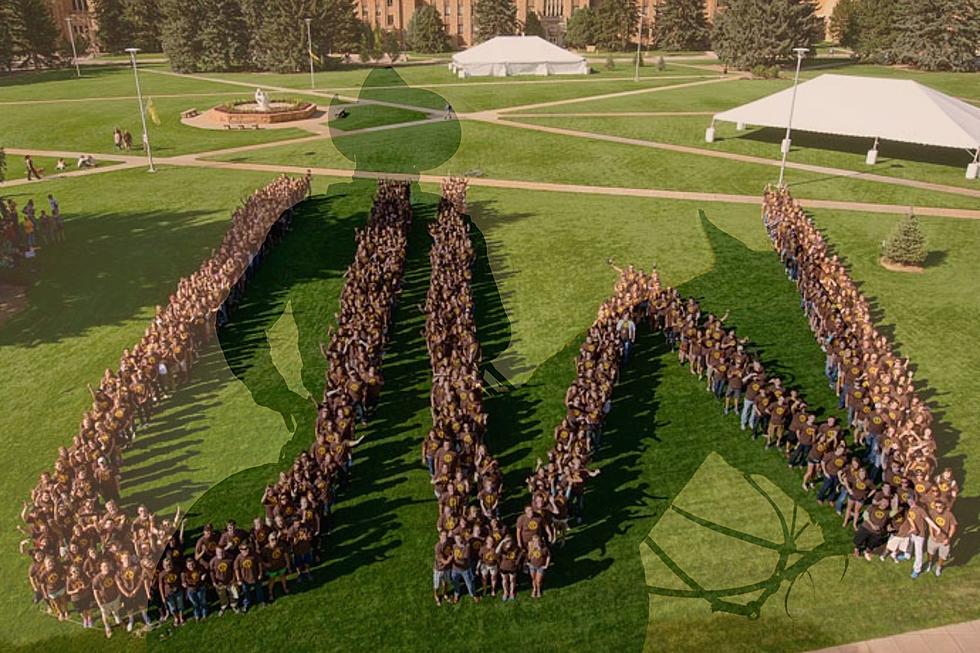
Planetarium To Have Children’s Show On Saturday, Regular Star Show Friday
The newly renovated Harry C. Vaughan University of Wyoming Planetarium is trying something new this week, adding a Saturday show for children.
According to planetarium director Travis Laurance, the first Saturday show on February 21 is a unique public show, because it targets a specific group of people.
“We wanted to do a show specifically for kids, or that’s geared towards children. When we say children it’s kind of a catch all for basically anybody who is new to astronomy,” says Laurance. “The first show we are talking about things that exist in our universe.”
Laurance says children and astronomy newcomers will learn about different objects in the universe such as stars, planets, and moons.
The planetarium has scheduled two Saturday shows, one in February and one in March. Each show will take place at 4 p.m., a time Laurance says was determined after speaking to parents about the best time for such an event.
The planetarium’s Friday night shows have been very popular, with most shows selling out well before show time. It is recommended for those who wish to attend to purchase tickets in advance, although tickets are available at the door if seats are still available.
Tickets cost $2 for students, $3 for non-students and are free for children. Tickets can be purchased at the Department of Physics main office which is located in Room 204 of the Physical Sciences Building. Tickets may be purchased Monday through Thursday from 8 a.m. until 5 p.m. and on Fridays from 8 a.m. until noon.
The planetarium is located in the basement of the Physical Sciences Building.
The show on Friday, February 20 focuses on our planet and what makes it so unique. The show, Our Mother Earth, begins at 7 p.m. with doors opening 20 minutes before.
A laser show, The Best of U2, will be shown at 8:20 p.m. following the star show. Tickets for the laser show are priced the same, and the doors will open 20 minutes before the show begins.
Shows for the rest of February and all of March are as follows:
Feb. 20th
- 7 p.m. Our Mother Earth
In mankind's exploration of the solar system and beyond, we have yet to find any planet similar to our own Earth. What makes our home planet so unique? Why is there life on Earth? In this show, we will explore the pieces that came together to make our planet habitable.
- 8:20 p.m. Laser Light: Best of U2
Feb. 21st (Saturday)
- 4 p.m. Welcome to the night sky (program geared towards children but all ages welcome)
This is the first in our youth centered weekend astronomy shows. We will discuss the different kinds of objects that exist in the universe and solar system. Star clusters, galaxies, planets, and moons will be explored in turn as we step away from Earth.
Feb. 27th
- 7 p.m. The Night Sky In Your Hands
Often the cost of buying a telescope puts off new amateur astronomers. Though this doesn't have to be the case! There are many celestial objects who can be viewed in much greater detail with a moderate pair of binoculars. We will also discuss free astronomy software for those all too common cloudy nights.
- 8:20 p.m. Laser Light: Daft Punk
March 6th
- 7 p.m. Asteroids, KBOs, and the Oort Cloud
In this show, we will fly through the solar system to explore and study some of the smaller objects of our stellar neighborhood, both near and far.
- 8:20 p.m. Laser Light: Legends
March 13th
- 7 p.m. Pale Blue Dot
How big is our universe and where do we stand in the cosmic expanse? This show will help us wrap our minds around truly how small that "Pale Blue Dot" that we live on is, and how much more there is left to discover.
- 8:20 p.m. Laser Light: Zeppelin Unbound
March 14th (Saturday)
- 4 p.m. Introduction to Astronomy (program geared towards children but all ages welcome)
When you look up at our night sky, what do you see? This show introduces you to these objects and more as we explore the galaxy and universe beyond.
March 20th
- 7 p.m. Little Green Men: Alien Life
The prospect of intelligent life somewhere off of Earth piques the interests of many different types of scientist and the public. The first radio pulsating star discovered was called LGM-1 due to the difficulty in explaining a naturally occurring hyper-regular signal. Tonight we will explore the search for alien life and how it crosses the fields of physics, astronomy, biology, and chemistry.
- 8:20 p.m. Laser Light: Michael Jackson
March 27th
- 7 p.m. Mars: the Mysterious Red Planet
Mars has been the focal point for myths, superstitions, and hoaxes for centuries. What makes this planet so fascinating? And what do we really know now about our red neighbor?
- 8:20 p.m. Laser Light: Laser Gaga
More From Laramie Live









